Clutch Moments Ranking: The Definitive Guide to Basketball’s Greatest High-Pressure Plays
Updated On: October 23, 2025 by Aaron Connolly
Top Clutch Moments Rankings
Ranking clutch moments takes a mix of analysis, intuition, and a bit of awe. You have to look at pressure levels, what’s at stake, and how players deliver when everything’s teetering on the edge.
The best clutch plays stick with us because they blend perfect timing with game-changing impact. You know the ones—they just hit different when the whole season rides on a single possession.
How the Rankings Are Determined
We judge clutch moments by looking at several key factors. Immediate impact matters, but so does the lasting significance of the play.
Pressure level always stands out. Finals moments just mean more than regular season heroics.
Key ranking factors include:
- Stakes involved (championship vs regular season)
- Time remaining (final seconds vs several minutes)
- Deficit overcome (comeback wins stand out)
- Opponent quality (toppling great teams counts extra)
Historical context really shifts things. Plays that change careers or break long curses get extra weight.
A buzzer-beater in Game 7 of the NBA Finals? That’s a different league than the same shot in round one.
We also look at how tough the play was. Stephen Curry’s four straight threes against France in the 2024 Olympics top the list—not just for the drama, but for the sheer nerve and accuracy.
Criteria for Defining ‘Clutch’
Clutch plays happen in the last five minutes when the score is within five points. That’s the standard most people use to measure pressure performance.
The moment has to matter. If the outcome’s already decided, even a wild shot doesn’t count as clutch.
Essential clutch criteria:
- Both teams still have a shot to win
- Pressure’s sky-high
- Individual brilliance when others fade
- Momentum-changing impact
Players usually struggle when the heat’s on, so clutch execution stands out even more. Michael Jordan’s 1998 Finals dagger against Utah? That’s the classic example—he iced the title with everything on the line.
Basketball just lends itself to clutch moments. One possession can flip everything, and the shot clock forces quick, gutsy decisions.
The Role of Game 7 Performances
Game 7 is the ultimate test for clutch players. Everything comes down to a single game, and the pressure is almost unbearable.
Why Game 7 matters most:
- Lose and you’re out—season over
- Both teams start with a real chance
- Crowd’s deafening, tension’s off the charts
- Moments that make or break legacies
Kawhi Leonard’s bouncing buzzer-beater against Philly in 2019? That’s about as clutch as it gets. The ball danced on the rim, then dropped Toronto into their first NBA Finals.
Game 7s reveal who’s got the nerves for greatness. Some players rise, some just collapse. That’s where mental toughness really shows.
Basketball’s format makes these moments even more dramatic. One bad night and it’s over. Every possession feels like life or death, and every mistake can haunt you for years.
Defining Clutch Moments in Basketball
Clutch moments in basketball pop up when the game’s hanging in the balance in the closing minutes. Usually, people define clutch time as the last five minutes with a margin of five points or less.
Some folks get even stricter, zeroing in on the last two minutes, especially when the score’s tied or there’s a chance to take the lead.
Key Characteristics of Clutch Play
The NBA calls clutch time the final five minutes with a five-point gap or less. That’s the window where every play feels huge.
Some analysts focus on those last two minutes. That’s when pressure really peaks and teams scramble to tie or snatch the lead.
Volume vs Efficiency Trade-offs:
- High-volume shooters often see their percentages drop in clutch time
- The best keep making shots under pressure
- Teams dial up isolation plays late in games
The mental side changes everything. Players face roaring crowds, media glare, and the weight of a season. Even their shooting form can break down.
Suddenly, shot selection is everything. Teams ditch their usual offense and go one-on-one. Stars demand the ball, even if they’re double-teamed.
Psychological Pressure and Performance
Mental toughness is what separates the legends from the rest. The pressure makes even great players miss shots they’d normally bury.
Physical Changes Under Pressure:
- Heart rate spikes and messes with rhythm
- Tight muscles make shots less smooth
- Short breaths throw off follow-through
Great clutch players stick to routines. Same pre-shot ritual, no matter what. That steadiness helps them stay sharp.
Some players actually love the pressure. They feed off the moment and the crowd. Those are the rare ones who get called clutch for a reason.
Defenses crank it up, too. Double teams come fast, help rotates over in a flash. Clutch shooters rarely get easy looks.
Home court means more in these moments. The crowd can shake visiting players or lift the home team to another level.
Evolution of Clutch Moments Across Eras
Clutch moments in basketball aren’t what they used to be. Rule tweaks and new playing styles have changed what “clutch” even means.
Era-Specific Differences:
- 1980s-90s: Hard-nosed defense, lots of isolation
- 2000s: Zone defense, more team play
- 2010s-now: Three-point obsession, analytics everywhere
The three-point line flipped clutch strategy. Teams chase threes instead of settling for twos. One shot can turn a game in a blink.
Analytics have shown which moments really matter. The last 15 seconds get all the highlights, but those final two minutes are often where games are won or lost.
Specialists have popped up, too. Some guys are known only for being clutch. Robert Horry? “Big Shot Bob” wasn’t a superstar, but he owned big moments.
TV and social media crank up the spotlight. Every big shot gets replayed a thousand times. That adds pressure, but also gives players a shot at lasting fame.
Greatest Clutch Performances in History
Sports have given us so many moments where athletes just refused to fold. Think Ray Allen’s miracle three in the 2013 NBA Finals or Derek Jeter’s walk-off hits. These are the plays that define clutch.
Iconic Game-Winning Shots
The best clutch moments? Almost always a single shot with the clock running out.
Michael Jordan’s fadeaway to beat Utah in the ’98 Finals is the gold standard. You can close your eyes and see it.
Ray Allen’s three-pointer in 2013? Miami was down three, facing elimination, and Allen drilled a corner shot to force overtime. That play saved LeBron’s legacy and Miami’s title hopes.
Key clutch shots that changed history:
- Jordan’s “Last Shot” (1998 NBA Finals)
- Allen’s corner three (2013 NBA Finals)
- Kawhi’s quadruple-bounce buzzer-beater (2019 playoffs)
- Joe Carter’s World Series walk-off (1993)
All these moments have the same DNA: crazy pressure, perfect execution, and consequences that go way beyond a single game.
Memorable Game 7 Deciders
Game 7s are just a different animal. Win and you move on; lose and it’s over. Every play feels like it could be the difference.
LeBron James put together one of the greatest clutch performances ever in Game 7 of the 2016 NBA Finals. He led the Cavs back from 3-1 down, dropped a triple-double, and hit a massive three with less than two minutes left.
Historic Game 7 performances:
- LeBron’s 2016 Finals epic
- Kobe’s gritty 2010 Finals finish
- Tim Duncan’s 2005 Finals takeover
- Magic Johnson’s rookie center game (1980)
When everything’s on the line, only the truly clutch rise above. These are the players who want the ball with the season at stake.
Unforgettable Comebacks
The wildest clutch moments sometimes stretch over whole games or series. These comebacks take nerves of steel and focus that just won’t crack.
Derek Jeter’s playoff career is a masterclass in clutch. He hit .308 in the postseason and walked off plenty of games, earning the “Captain Clutch” nickname for a reason.
Legendary comeback moments:
- Patriots’ 28-3 Super Bowl rally (2017)
- Liverpool’s Champions League shocker (2005)
- Cavs’ 3-1 Finals comeback (2016)
- Red Sox break the curse in the ALCS (2004)
These aren’t just about a single shot. Athletes have to stay sharp and keep believing over long stretches. That’s what sets legends apart.
Players With Legendary Clutch Reputations
A few basketball legends just have that clutch gene. They scare opponents when the pressure’s highest, and they keep coming through when it matters most.
Some stars do it in the spotlight, others make their mark quietly in the background.
NBA’s Most Reliable Closers
Michael Jordan is at the top of every clutch list. He hit nine game-winning buzzer-beaters and never let a Finals go to Game 7—six titles, six tries.
Jordan’s “Flu Game” in the ’97 Finals is legendary. He dropped 38 points even though he could barely stand.
Kobe Bryant always wanted the last shot. He made eight buzzer-beaters, six without any help.
Bryant never shied away from tough shots. His 60-point farewell included plenty of late-game magic.
Damian Lillard earned “Dame Time” with playoff daggers. That 37-footer to send OKC home? Pure audacity.
Lillard’s deep range forces defenders to cover him almost to half-court. That makes him a nightmare in crunch time.
Unsung Heroes of Crunch Time
Robert Horry wasn’t a superstar, but “Big Shot Bob” made his name with clutch buckets for seven championship teams.
Horry learned to stay calm when it counted. His teammates always trusted him with big shots.
Ray Allen will always be remembered for that one shot—his 2013 Finals three changed everything for Miami.
Allen’s form never wavered, even under pressure. That consistency made him deadly in the playoffs.
Steve Kerr quietly hit 45.4% of his playoff threes, many in clutch moments. He helped both the Bulls and Spurs seal titles.
Kerr knew his job: be ready when the stars kicked it out. His prep and mindset made him a go-to guy in big spots.
Jerry West’s Place in Clutch History
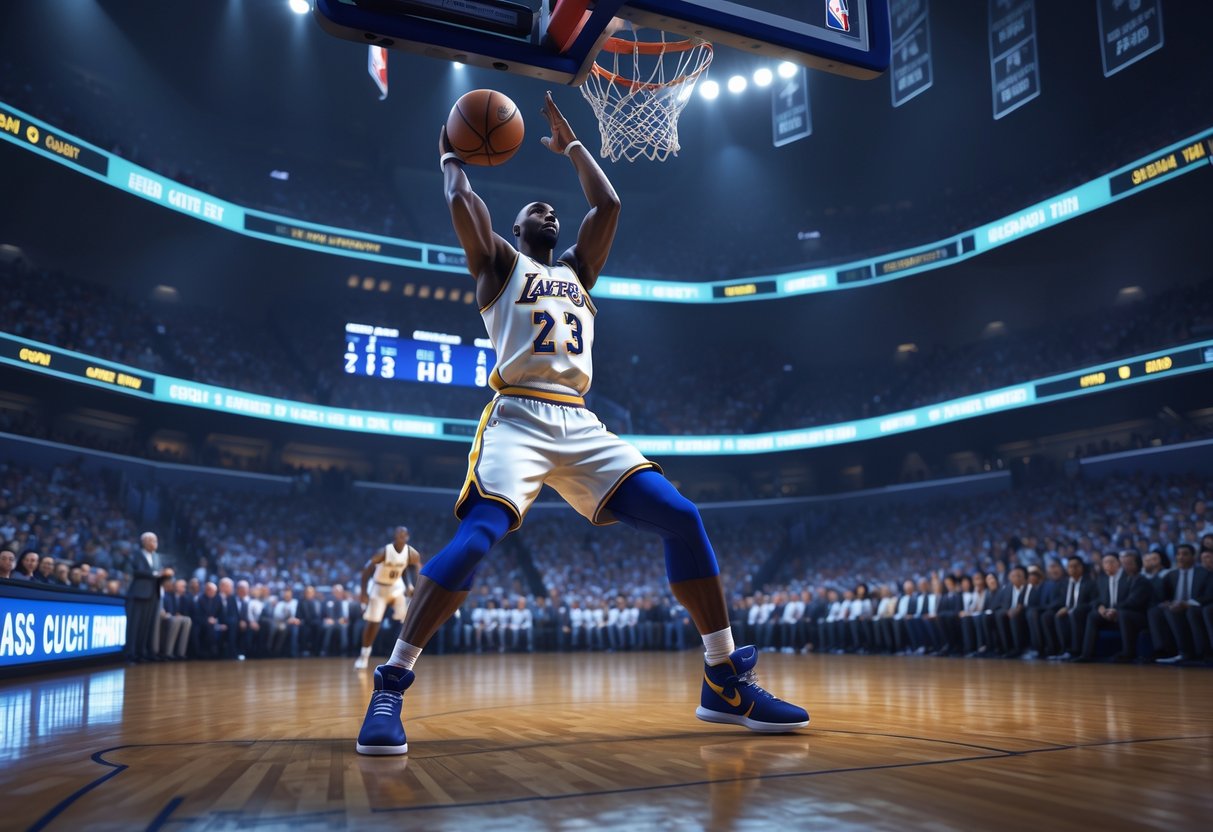
Jerry West earned “Mr. Clutch” by delivering again and again when it counted most. His 53-foot shot in the 1970 Finals and steady playoff heroics set the standard for clutch basketball.
The 1970 Finals Buzzer-Beater
Jerry West’s most iconic clutch moment happened in Game 3 of the 1970 NBA Finals against the New York Knicks. The Lakers trailed with just seconds on the clock, and West caught an inbound pass near midcourt.
He heaved a desperate shot from 53 feet out. The ball soared, then dropped cleanly through the net as the buzzer blared.
The crowd erupted. West’s wild shot forced overtime, and everyone in the building knew they’d just witnessed something historic.
The Lakers didn’t win that night or the series, but West’s shot instantly became basketball folklore. It captured his fearless attitude in pressure moments. Even now, fans argue it’s one of the greatest clutch shots ever.
Clutch Career Highlights
West built his reputation for clutch play on more than just one miracle. In 1969, he became the only player ever to win Finals MVP for the losing team. He put up 37.9 points per game against the Celtics in that seven-game battle.
His playoff stats were just as eye-popping. West averaged 29.1 points per game in the postseason. In the 1965 Western Division Finals, he set the record for highest scoring average in a single playoff series—46.3 points per game.
Key Clutch Statistics:
- Only Finals MVP from losing team (1969)
- 29.1 career playoff scoring average
- 46.3 PPG in 1965 Western Division Finals
West’s clutch legacy keeps growing. In 2022, the NBA named their Clutch Player of the Year award after him. Basketball minds like Pat Riley still call West the greatest clutch player ever.
Phoenix Suns and Clutch Legacy
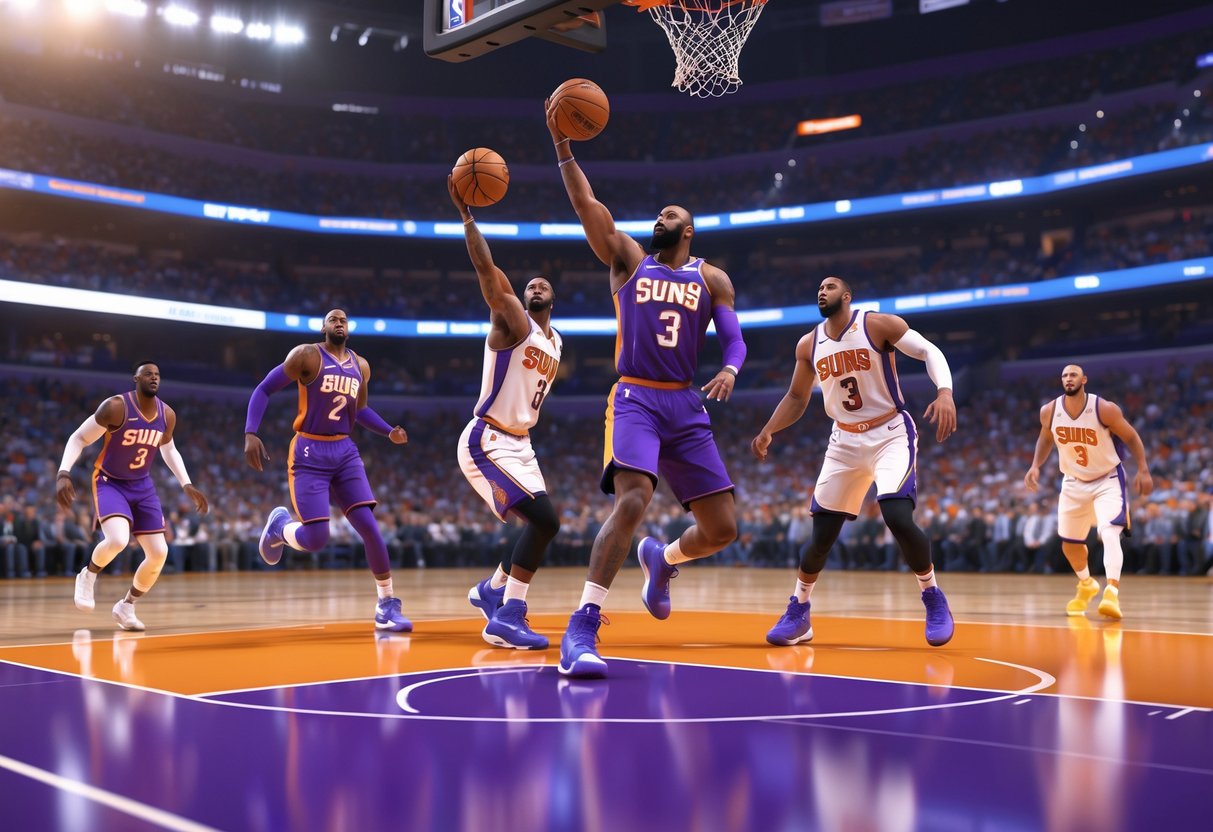
The Phoenix Suns have earned their reputation with unforgettable playoff moments and recent clutch heroics. Chris Paul’s leadership pushed the team to one of the best clutch records in NBA history during the 2021-22 season.
Historic Playoff Buzzer-Beaters
The Suns’ clutch story stretches back through decades. Phoenix players have come through when it mattered most, time and again.
Walter Davis became the franchise’s first clutch star in the late 1970s. His smooth jumper earned him the nickname “The Greyhound.” Davis nailed several game-winners as a Sun.
Kevin Johnson owned the 1990s with his late-game magic. His quickness and vision helped him create last-second shots. Johnson’s playoff runs were full of buzzer-beaters against Western Conference rivals.
Steve Nash brought a different brand of clutch play. Instead of always taking the last shot, Nash would set up teammates with perfect passes. His basketball IQ really stood out in tense fourth quarters.
The 2021 playoff run gave us a new wave of clutch moments. Devin Booker buried huge shots throughout the Finals. His 40-point explosions showed he thrives when the stakes are highest.
Modern-Day Suns’ High-Stakes Moments
Chris Paul changed everything for Phoenix after arriving. His leadership and poise led the Suns to a 33-9 record in clutch-time games in 2021-22. That’s the fourth-best mark in league history.
Paul’s clutch statistics say it all. His 41-point outburst against New Orleans was a masterclass in taking over a game. Paul’s experience helps him make the right decision when it matters most.
Kevin Durant added another clutch threat to the Suns. On opening night in 2023, Durant hit a game-tying jumper with just 21 seconds left against the Clippers. Phoenix pulled out the win in overtime—classic Durant.
Durant’s clutch shooting numbers sit near the top of the league. Defenders struggle to bother his shot, especially late in games. He doesn’t shy away from the moment, and that’s rare.
This Suns squad blends experience and talent. Booker, Paul, and Durant make up one of the league’s most dangerous closing trios. Their combined playoff mileage gives Phoenix confidence in any tight finish.
Decisive Game 7s: High Stakes and Heroics
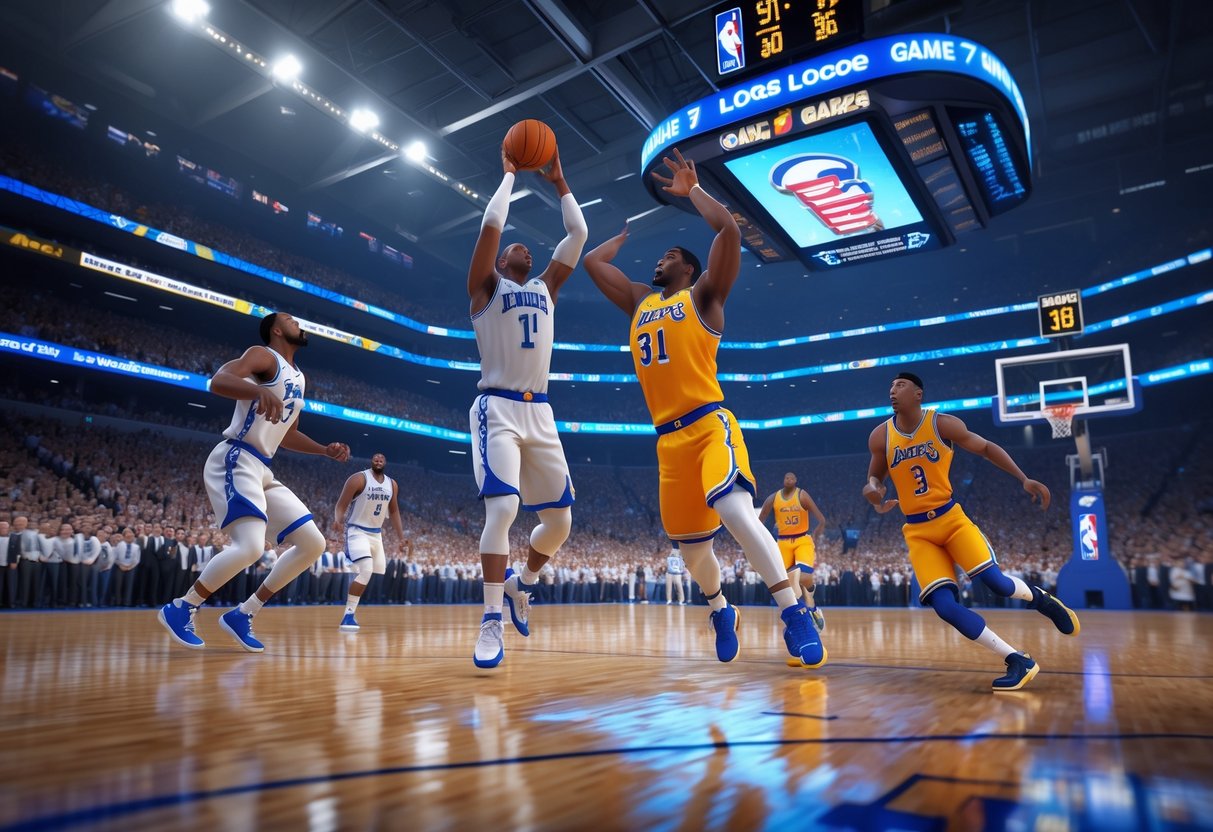
Game 7 of the NBA Finals is the ultimate test. Champions get made here, and legends are born. These winner-take-all games deliver the wildest finishes and shape how we remember the sport’s biggest stars.
Most Dramatic Game 7 Finishes
Game 7s get wild when everything’s at stake. In 2016, LeBron James pulled off one of the most iconic blocks ever against Golden State.
Kyrie Irving followed up with a cold-blooded three-pointer to clinch Cleveland’s first title. The pressure was off the charts, but they delivered.
Ray Allen’s miracle three in 2013 forced Game 7 against San Antonio with just seconds left. That shot will never be forgotten.
Willis Reed limped onto the court in 1970, playing hurt and inspiring his team to the win. That’s what real determination looks like.
These moments all have something in common:
- Split-second choices under insane pressure
- Performances that define careers
- Plays fans talk about for years
- Players who stayed cool while others folded
Impact on Player Legacies
Game 7s separate the clutch from the rest. LeBron James cemented his legacy with his 2016 heroics.
That Finals run changed how people saw him. Before that, critics doubted his ability to deliver when it counted.
Michael Jordan’s 1997 Finals shot added another layer to his legend. Sometimes, one basket rewrites a player’s story.
Game 7 failures can haunt players for years. Struggling under that spotlight sticks in people’s minds.
The stakes in Game 7 are brutally simple:
- Win: Enter basketball immortality
- Lose: Face endless criticism
- Shine: Boost your Hall of Fame argument
- Collapse: Leave fans questioning your greatness
These games show us who truly belongs among the sport’s elite.
Clutch Teams: Groups That Thrived Under Pressure
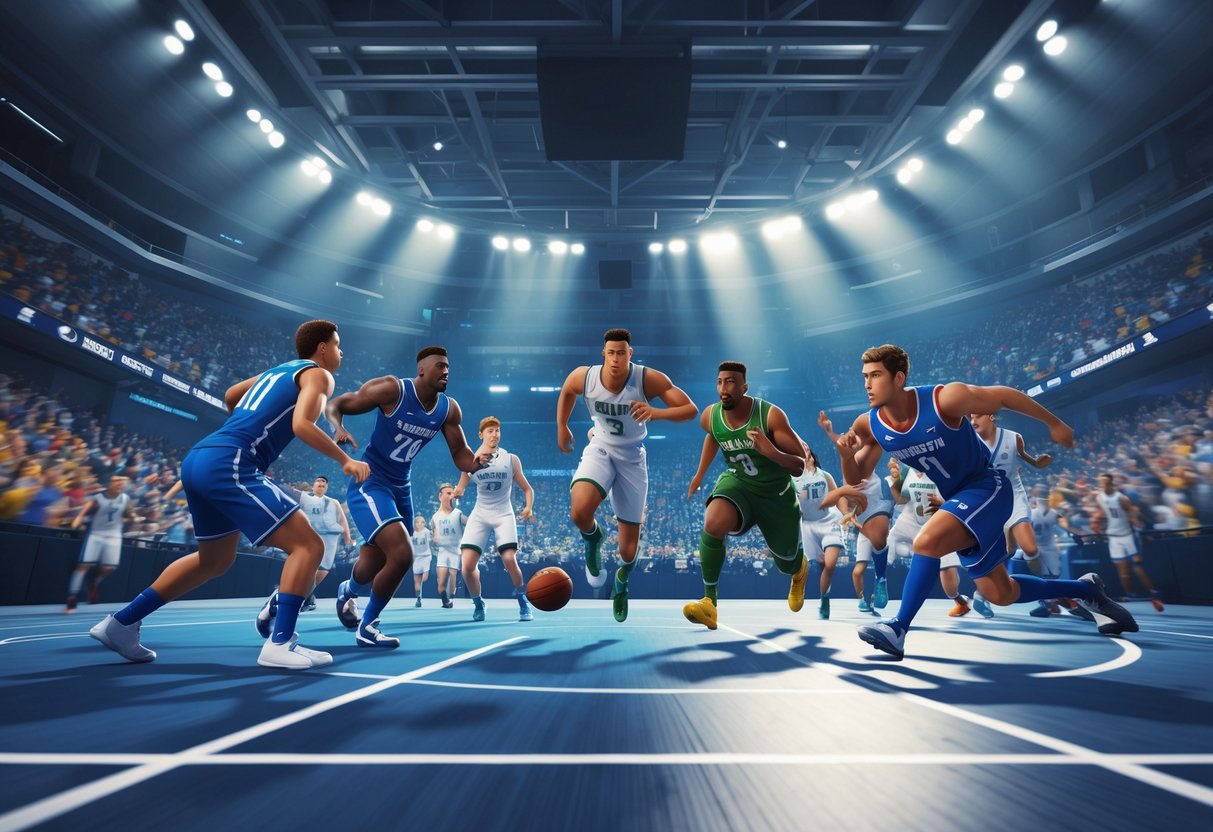
Some teams fall apart when the pressure builds, but others seem to get sharper. The greatest clutch teams mix talent, mental toughness, and flawless execution.
Famous Teams Known for Staying Cool
The 1990s Chicago Bulls set the bar for clutch play. With Michael Jordan leading, they won six titles by dominating crunch time.
Their clutch approach:
- Trusting stars with the ball late
- Keeping defensive intensity up, even when tired
- Staying calm during opponent runs
The 2008 Boston Celtics had a different recipe. Paul Pierce, Kevin Garnett, and Ray Allen brought veteran leadership and learned from past playoff heartbreak.
Heads up: Some teams try to copy clutch habits without building the right culture first.
The San Antonio Spurs (1999-2014) showed the most consistent clutch play. Tim Duncan’s steady presence set the tone. The Spurs rarely made mistakes with the game on the line.
They focused on:
- Solid execution over highlight plays
- Taking smart shots late
- Sticking to their system, even when behind
Tip: Watch old Finals footage to see how these teams kept their cool in timeouts.
Modern teams like the Warriors lean on elite shooting. Their three-point barrages can flip a close game in seconds.
Comparing Dynasties’ Late-Game Success
Dynasties have won with different clutch styles. The Lakers’ “Showtime” teams pushed the tempo in tight fourth quarters. The Celtics preferred a slow, halfcourt grind.
| Dynasty | Clutch Strategy | Key Strength |
|---|---|---|
| 1980s Lakers | Pace and athleticism | Fast break scoring |
| 1990s Bulls | Isolation plays | Jordan’s ability |
| 2000s Spurs | Team execution | Fundamental skills |
| 2010s Warriors | Three-point shooting | Spacing and ball movement |
The best dynasties tweaked their clutch style to match their roster. Early Warriors teams leaned on Curry isolations; later groups shared the ball more.
Championship teams usually have:
- Stars who want the ball when it counts
- Role players who step up for big shots
- Coaches who don’t lose their heads under stress
Analytics now show that clutch wins often come down to shot selection. Teams that get better looks in the last five minutes win more close games.
The top clutch dynasties always had more than one player ready to make a big play. That forced defenses to pick their poison.
Statistical Analysis of Clutch Performances

Modern basketball analytics have changed how we look at clutch play. It’s not just about game-winners anymore. New tools like the Estimation of Clutch Competency (EoCC) combine different performance indicators to show who actually delivers under pressure.
Advanced Metrics
True Shooting Percentage (TS%) is still the go-to for measuring clutch efficiency. It blends field goals, threes, and free throws into one stat. That matters because some shots are worth more than others.
EoCC takes it a step further by factoring in offense and defense. Studies from 1997-2018 found that shooting percentages don’t really go up in clutch time. That’s surprising, right? Turns out, great players don’t magically shoot better when it’s tight.
Instead, the best clutch guys keep their efficiency steady and take on more responsibility. They grab key rebounds, make big defensive stops, and set up teammates. The data shows that fast breaks, inbound plays, and smart movement work best in crunch time.
Win probability stats help us see the bigger picture. A steal with 30 seconds left in a tie game is way more valuable than one in a blowout. Analytics weigh every play by how much it shifts the odds.
Notable Statistical Standouts
Michael Jordan’s “The Shot” in 1989 is a textbook example of clutch stats meeting the eye test. Beyond that one bucket, his numbers show he kept his shooting high while taking more shots in crunch time.
Researchers have found a few things that set top clutch players apart. They don’t drop off in efficiency when it gets tense. They chip in with rebounds, assists, and defense that don’t always make the highlight reel.
The most clutch players know when to attack and when to set up teammates. That balance shows up in advanced metrics that track both personal stats and team wins.
Modern analysis suggests clutch performance is more about smart choices than superhuman talent. The best make the right calls on shots and game management when the heat is on.
Clutch Moments Beyond the NBA
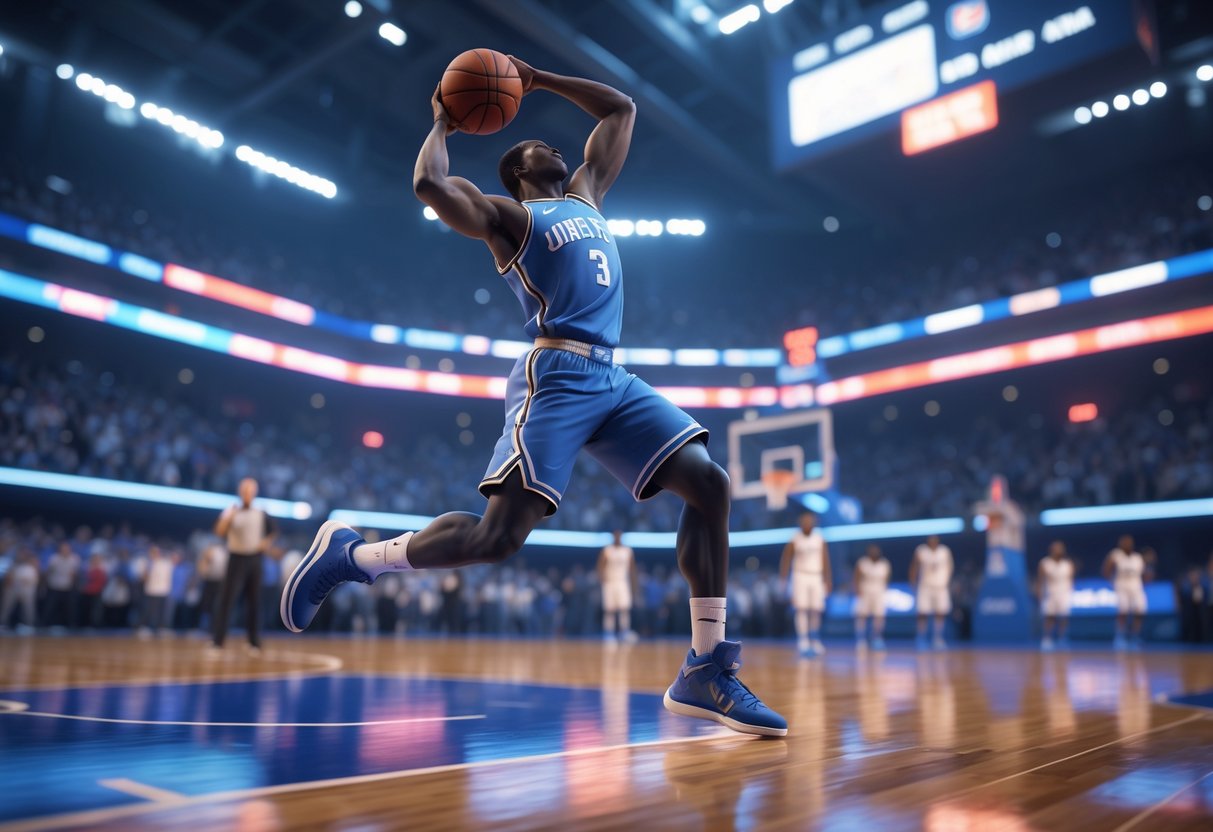
Basketball’s wildest moments aren’t just in the NBA. College hoops and international play give us some of the most dramatic finishes anywhere.
College Basketball’s Greatest Finishes
March Madness is a pressure cooker for clutch shots. One miss and your season’s over—a single basket can mean everything.
Christian Laettner’s turnaround against Kentucky in 1992 still stands out. Duke was down one with 2.1 seconds left when Laettner caught a full-court pass and buried the winner.
Other unforgettable March Madness moments:
- Lorenzo Charles’ dunk for NC State in 1983
- Kris Jenkins’ buzzer-beater for Villanova in 2016
- Bryce Drew’s wild shot for Valparaiso in 1998
College pressure just feels different. These are young guys playing for their schools and a shot at the pros.
Conference tournaments bring their own clutch drama. Players know it’s win-or-go-home, so every possession feels like life or death.
International and EuroLeague High-Pressure Plays
EuroLeague basketball brings clutch performances from some of the world’s best players outside the NBA. The playoff atmosphere gets wild, and the crowds? They’re absolutely relentless.
People started calling Vassilis Spanoulis “Kill Bill” because he always seemed to hit those huge, late-game shots. He buried game-winners for Olympiacos, including some that changed the outcome of EuroLeague Final Four games.
A few unforgettable international clutch moments:
- Juan Carlos Navarro nailed a three-pointer for Spain in the 2006 World Championships.
- Šarūnas Jasikevičius pulled up from deep in the EuroLeague playoffs.
- Nando de Colo took over for CSKA Moscow in the fourth quarter more than once.
FIBA competitions crank up the pressure with national pride on the line. Players don’t just play for themselves—they carry the hopes of their whole country.
The shot clock and game flow in international play create clutch situations that feel different from the NBA. Usually, someone gets one last possession to win it all, and that’s when the drama really kicks in.
Cultural Impact of Clutch Moments
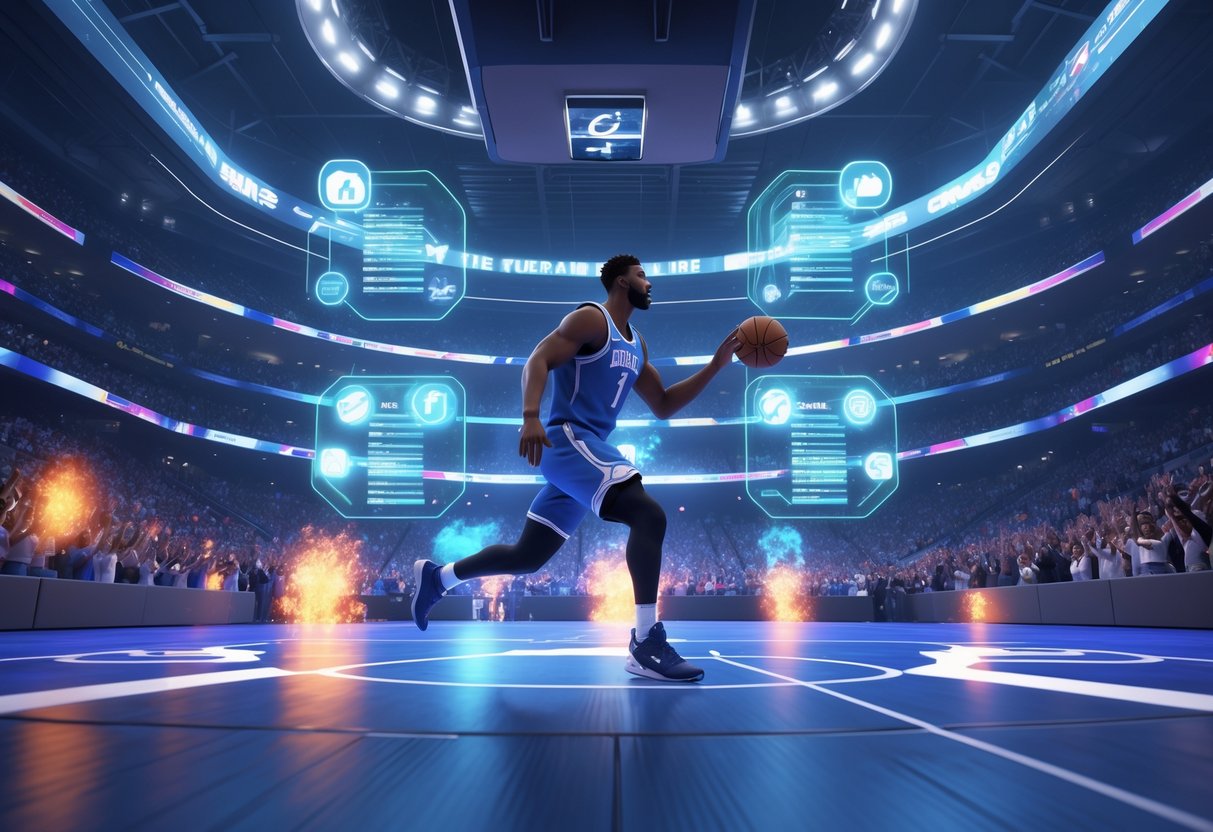
Clutch moments in basketball stick with us long after the final buzzer. These plays don’t just decide games—they become part of basketball’s collective memory and shape how we see the sport.
How Clutch Plays Shape Basketball Lore
History in basketball seems to orbit around clutch moments. Michael Jordan’s game-winner against Utah in 1998? That shot is more than just a stat—it’s the heart of his legacy.
These plays turn players into legends. Ray Allen’s three-pointer in Game 6 of the 2013 NBA Finals didn’t just save Miami’s season; it turned a normal year into straight-up basketball folklore.
Why do these moments matter so much?
- They make kids dream big.
- They give us highlight reels we never get tired of.
- They turn solid players into absolute icons.
Clutch performances can define a team’s identity. The Boston Celtics grabbed 11 championships in 13 years, but it was more than just winning—they built a culture that still echoes today.
Guys like Larry Bird and Magic Johnson did more than knock down shots. They created stories people still tell their kids about what greatness really looks like.
Media and Fan Perspectives
TV and social media have totally changed the way we experience clutch plays. What used to be just for the folks in the arena now gets broadcast to millions and lives forever online.
Fans crave those late-game heroics. We tune in hoping for that one moment when everything’s on the line and someone steps up. The media takes these moments and turns them into events everyone talks about.
Digital platforms have made clutch moments impossible to miss:
- YouTube keeps every classic play alive.
- Social media explodes with instant reactions.
- Streaming lets us relive the best games whenever we want.
Sports journalists spend entire careers breaking down clutch performances. They argue about who’s the most reliable and create rankings that keep fan debates going for years.
Fans connect over these moments. Whether you’re arguing about Kobe versus LeBron or just reliving old highlights, these debates bring people together. It’s wild how a single shot can spark friendships.
Frequently Asked Questions
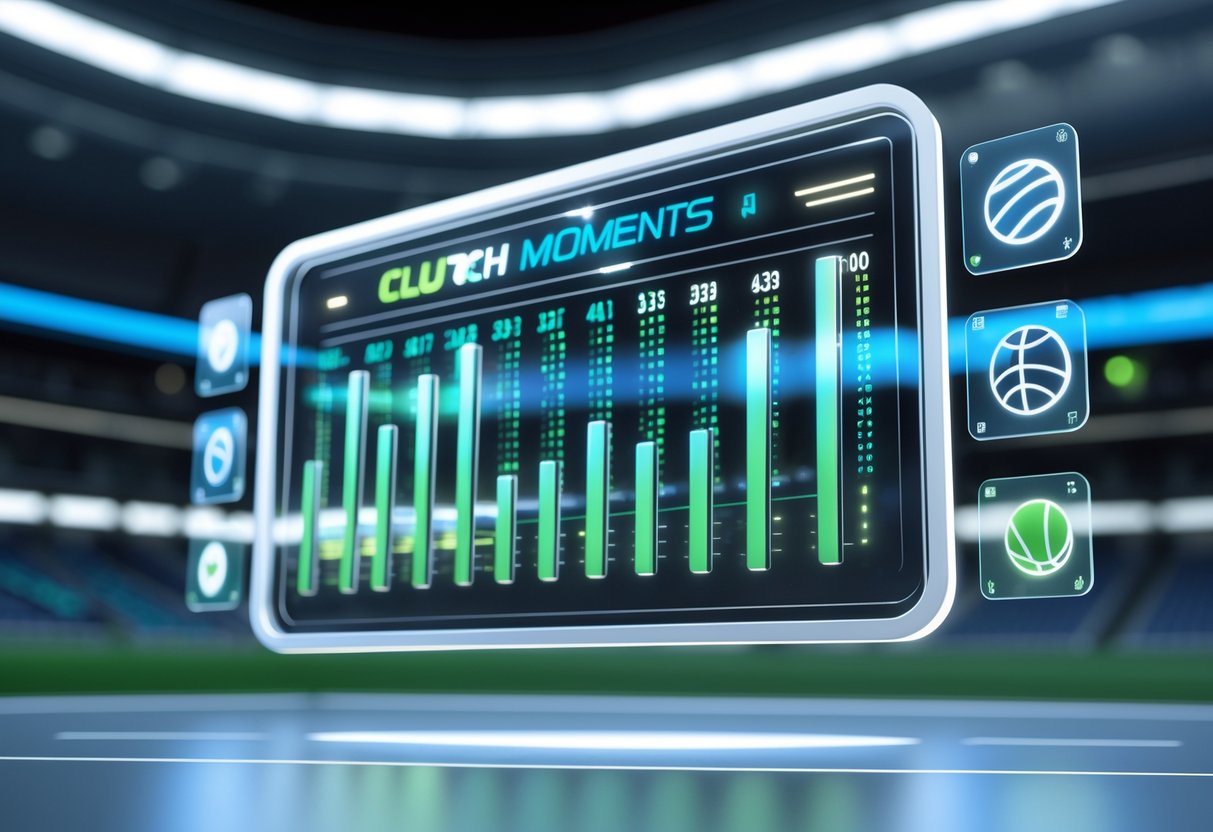
Sports history is packed with clutch moments that show what people can do under pressure. From last-second goals in football to wild comebacks in esports, there’s no shortage of drama.
What are the all-time best clutch moments in sports history?
Kirk Gibson’s walk-off home run in the 1988 World Series stands out as a baseball classic. He limped up to the plate, barely able to swing, and still delivered when it mattered most.
Michael Jordan’s “Last Shot” in the 1998 NBA Finals locked up the Bulls’ sixth championship. That play really sums up his ability to thrive with everything on the line.
Liverpool’s comeback in the 2005 Champions League final against AC Milan? Legendary. They clawed back from 3-0 down at halftime and won on penalties.
Leicester City’s 2015-16 Premier League run was one long clutch moment. Nobody expected them to win, yet they pulled off a 5000-1 miracle.
The Patriots’ 28-3 comeback in Super Bowl LI still gets people talking. Tom Brady led the charge and pulled off the biggest turnaround in Super Bowl history.
Who are the athletes known for their exceptional performance under pressure?
Derek Jeter got called “Mr November” because he always seemed to deliver in the World Series. That 2001 walk-off homer? Pure clutch.
David Ortiz, or “Big Papi,” came through again and again for the Red Sox in 2004. He helped Boston erase a 3-0 deficit against the Yankees.
Kobe Bryant’s “Mamba Mentality” made him scary in crunch time. He just had a knack for making impossible shots when it counted most.
Sergio Ramos scored huge late goals for Real Madrid. His equalizer in the 2014 Champions League final and penalty in 2016 showed he lived for the big moments.
In esports, Lee “Faker” Sang-hyeok has made a career out of staying cool under pressure. His calm demeanor in high-stakes games set him apart.
Can you list some unforgettable last-minute wins in competitive sports?
Manchester City won the 2012 Premier League with Sergio Aguero’s 94th-minute goal. That strike ended a 44-year title drought in the wildest way.
The 1999 Champions League final? Manchester United scored twice in stoppage time. Sheringham and Solskjaer flipped the script on Bayern Munich.
Ray Allen’s three-pointer in Game 6 of the 2013 NBA Finals kept the Miami Heat alive. That shot from the corner forced overtime and led to a championship.
Christian Eriksen’s free-kick against France in 2022 marked his comeback to top-level football. After his Euro 2020 cardiac arrest, that goal showed real mental strength.
How do players prepare mentally for high-stakes situations in games?
Athletes use visualisation to picture themselves succeeding before it actually happens. A lot of top performers spend time imagining clutch scenarios during practice.
Breathing exercises help players keep their cool when the pressure builds. Focusing on their breath lets them stay calm and locked in.
Routines make tough situations feel familiar. Many players stick to specific pre-shot or pre-play habits, no matter how big the moment.
Experience is huge. The more often athletes face high-stakes matches, the better they get at handling the pressure.
Mental coaches work with players to develop strategies for handling pressure. These coaches teach athletes to turn nerves into excitement instead of fear.
What have been the most dramatic turnarounds in esports tournaments?
The 2016 League of Legends World Championship had some wild comebacks. Teams kept flipping games, even when they were way behind.
Counter-Strike: Global Offensive Majors have seen teams come back from 15-3 deficits to win in overtime. Those reversals are legendary.
Dota 2’s The International is famous for million-dollar moments. Players step up under insane pressure with life-changing prizes on the line.
Fighting game tournaments like EVO are packed with bracket resets and last-gasp comebacks. Players can go from nearly out to suddenly winning it all.
Rocket League’s RLCS tournaments deliver last-second goals and crazy overtime finishes. The game’s style just breeds drama and clutch plays.
Which football matches feature the most memorable last-minute goals?
Manchester City vs QPR in 2012? That one still gives fans chills. Sergio Aguero smashed in an injury-time winner, and City snatched the Premier League title right at the death.
Barcelona vs Paris Saint-Germain in 2017? Wild stuff. The famous “6-1” comeback had the Camp Nou roaring with multiple late goals, probably one of football’s wildest turnarounds.
Liverpool vs Barcelona in 2019 brought out Anfield’s magic once again. That 4-0 win flipped a 3-0 first-leg loss on its head, and honestly, the whole stadium felt electric.
Real Madrid vs Manchester City in 2022? Absolute chaos. Rodrygo scored in the 89th and 90th minutes, dragging Madrid into extra time when all hope seemed lost.
Arsenal vs Liverpool in 1989? Talk about drama. Michael Thomas burst through in the dying seconds and bagged the goal that handed Arsenal their first title in nearly two decades.


